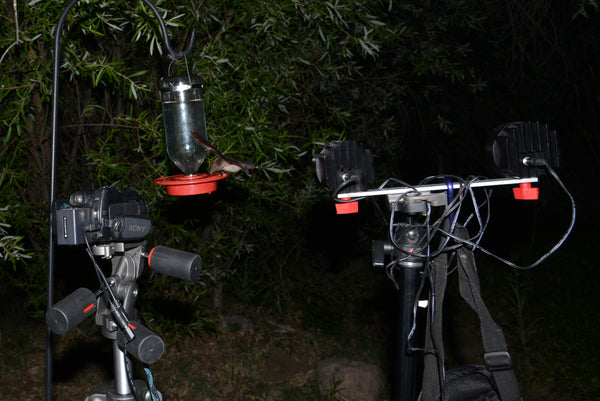A pretty common request for us recommendations on a Sony NightShot camera for monitoring bat activity. Since this feature have been around for years, it is possible to find all sorts of NightShot cameras in the used market. While models come and go every year, below are the key points to look for that stay constant year-to-year to help you wade through the increasingly deep pool of used cameras. Of course, the best cameras will always be the newest ones, so if the absolute best image quality is required, new is probably the way to go.
NIGHTSHOT FUNCTION: first and foremost this feature must be included or you simply cannot film in IR light. Check the Sony specs for NightShot mode, and even the manufacturer's photos of the camera to verify there is NightShot button on the exterior (usually under the fold out LCD display. Only the high-end consumer grade Sony cameras have this feature.
SENSOR SIZE: Bigger captures more light and therefore is better. For reference, in 2017 the Sony FDR-AX53 contained a .28'' sensor, but the FDR-AX100 and FDR-AX700 contain full 1'' sensors, the largest available at this time with the NightShot function. Sensor size is always found in the tech specs of the camera.
HARD DRIVE/SD CARD: Old NightShot-capable cameras may record to DVD or Mini-DV formats, these are cumbersome to use with modern digital video workflows for archiving and editing purposes and probably should be avoided if you are editing video on a regular basis.
CAMERA SETTINGS: Generally speaking, use at least 1080 movie size, or larger. The data rate should always be set to the highest possible "recording quality". "Low Lux" feature, if equipt, should be on (newer cameras are so sensitive you may experiment with this off if the subject is close). Anytime a tripod is used, "Steadyshot" should be off. "Focus peaking" is a visual representation of what parts of the image are in focus, so we recommend that be on if equipt. Once your image is in focus, press the "manual focus" button to lock it in place and keep the camera from inadvertently attempting to focus on passing insects, etc.

LIGHTING TIP: If you use "off camera lighting" techniques by placing lamps 3' or more away from the camera, the textures/shadows this generates will give your video a more 3-dimensional look rather than a flatly lit scene. This also reduces or eliminates "floating ghost orbs" caused by the light hitting out-of-focus dust particles near the lens or bright flashes of movement cause by a moth buzzing by. (Insects are not attracted to IRLamps!)





